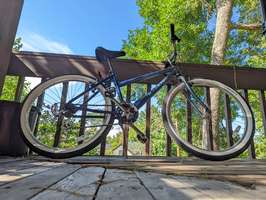Connected Four: Remote Electro-Mechanical Connect Four
Connected Four is an internet-connected version of the classic game Connect Four. The concept: build an extension of the Connect Four board to measure where you place your piece, send that information over the internet to your opponent’s board far, far away and drop a piece into the same column on their board as you did on yours. Built with Eli Fatsi for Pointless Weekend 2016.
This article originally appeared on the Viget blog.
Connecting two board games and orchestrating piece movement over the internet sounded like a tough but solvable challenge for our weekend. We could have done this entirely with software, but we thought it would be fun to keep the physicality of Connect Four (pieces make a great sound as they rattle down the board) while letting two players compete even if they are far away from each other.
We started by buying two Connect Four boards for reference, and sketching out mechanisms for moving pieces to different columns of the board without any human intervention.
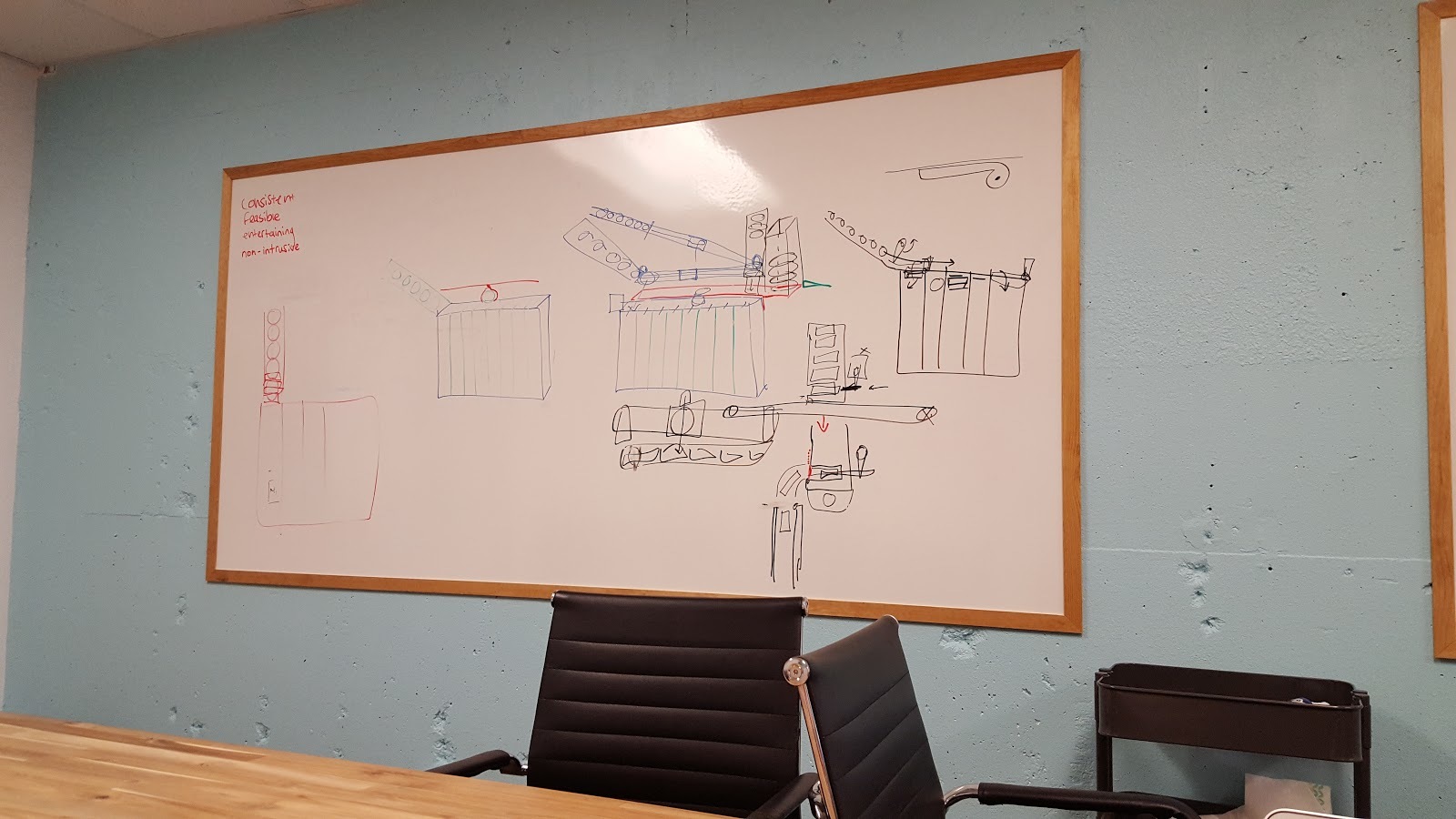
Once we had figured out a hardware design direction, we started building our puck dropping assembly. We settled on a movable bucket configuration, which used a timing belt and pulleys from the Temper-o-meter with a 3D printed puck bucket.
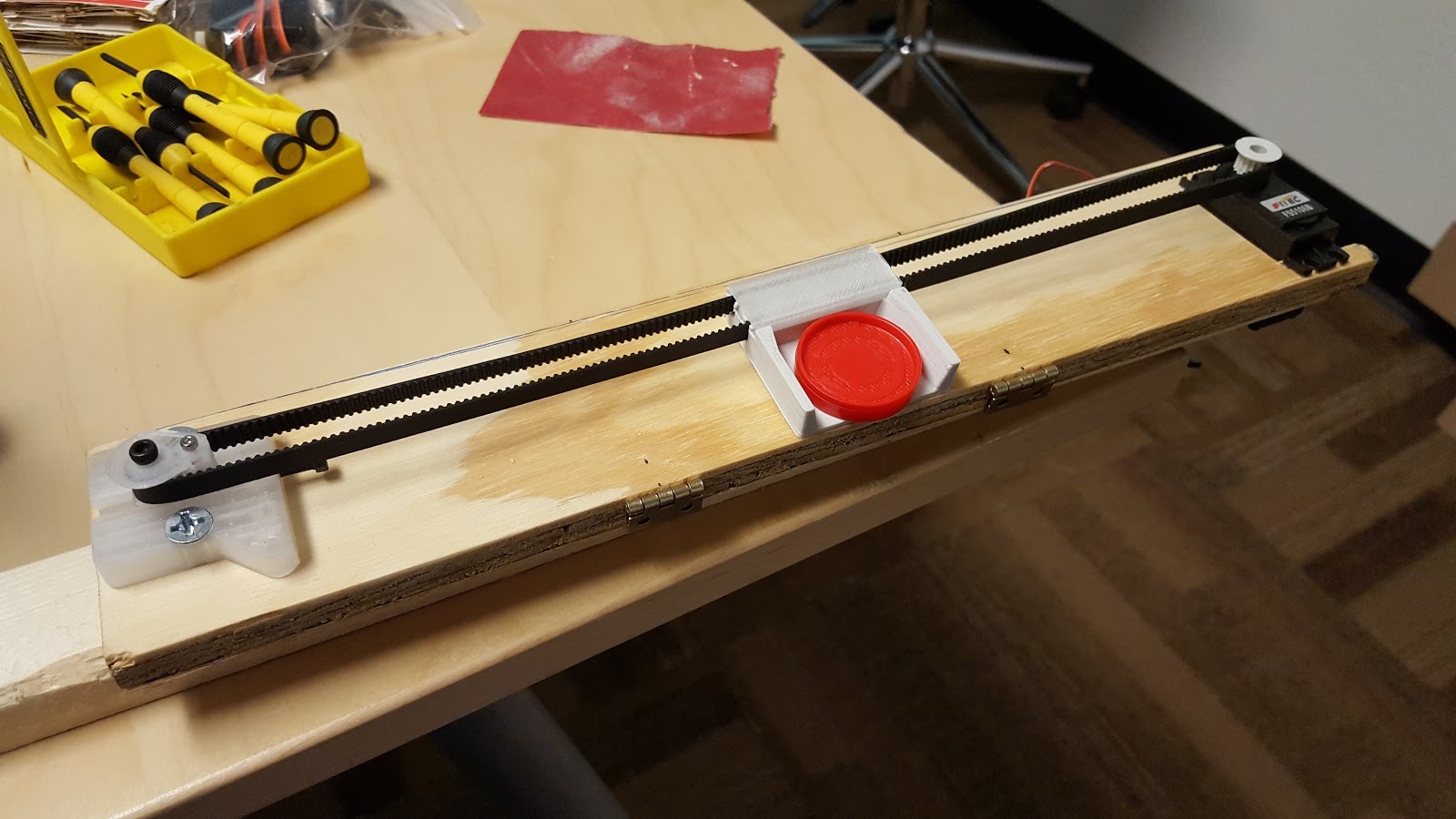
Although we had originally planned on mounting this directly on the Connect Four board, that connection proved too weak and we built a backplane for mounting the conveyor and other electronics.
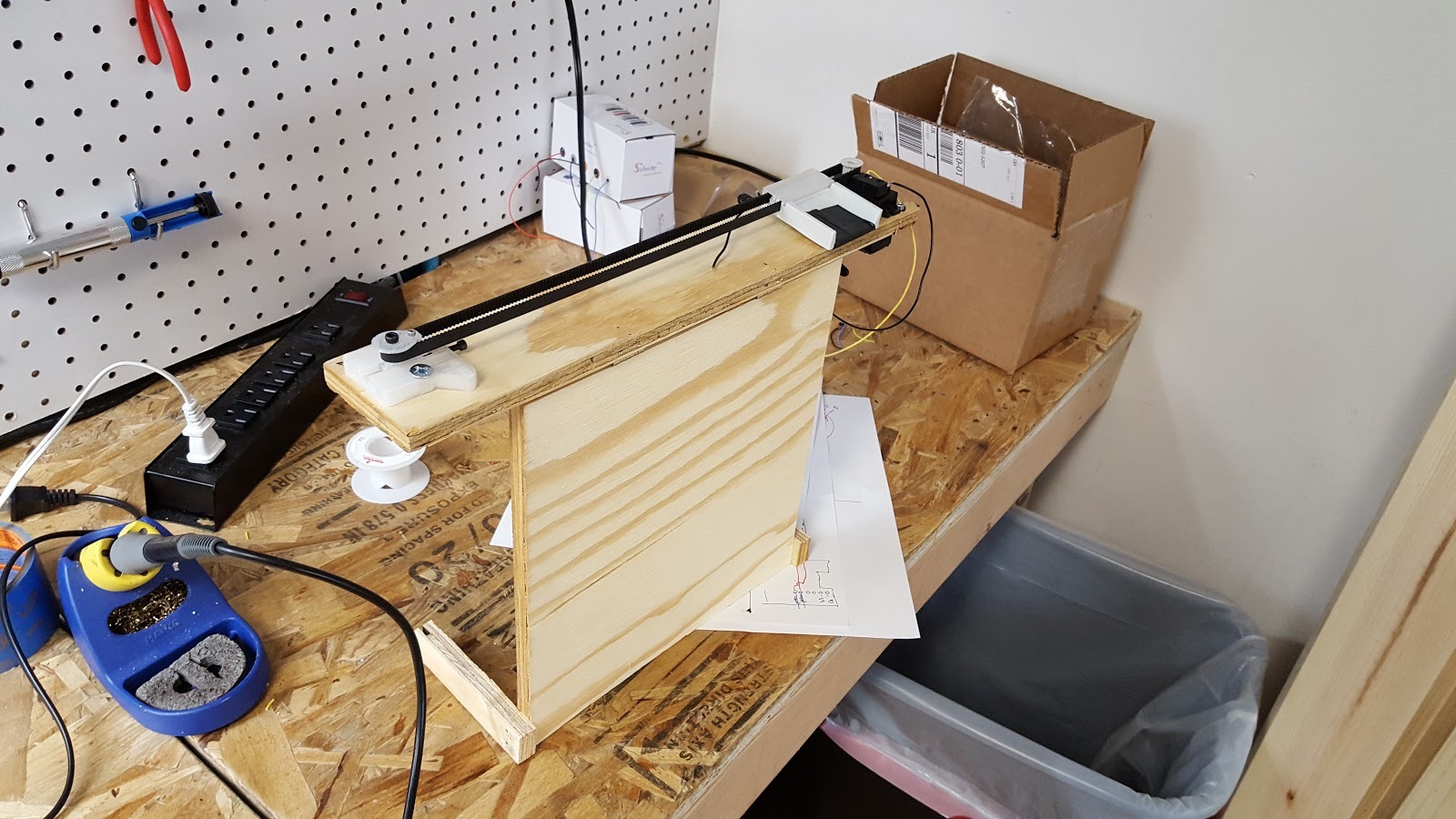
A servo flips the entire conveyor forward, tipping the puck into the right column.
As we did for the Temper-o-meter, we built a self-calibrating switch into our conveyor mechanism so that the servo can reliably reset it’s position after moving.
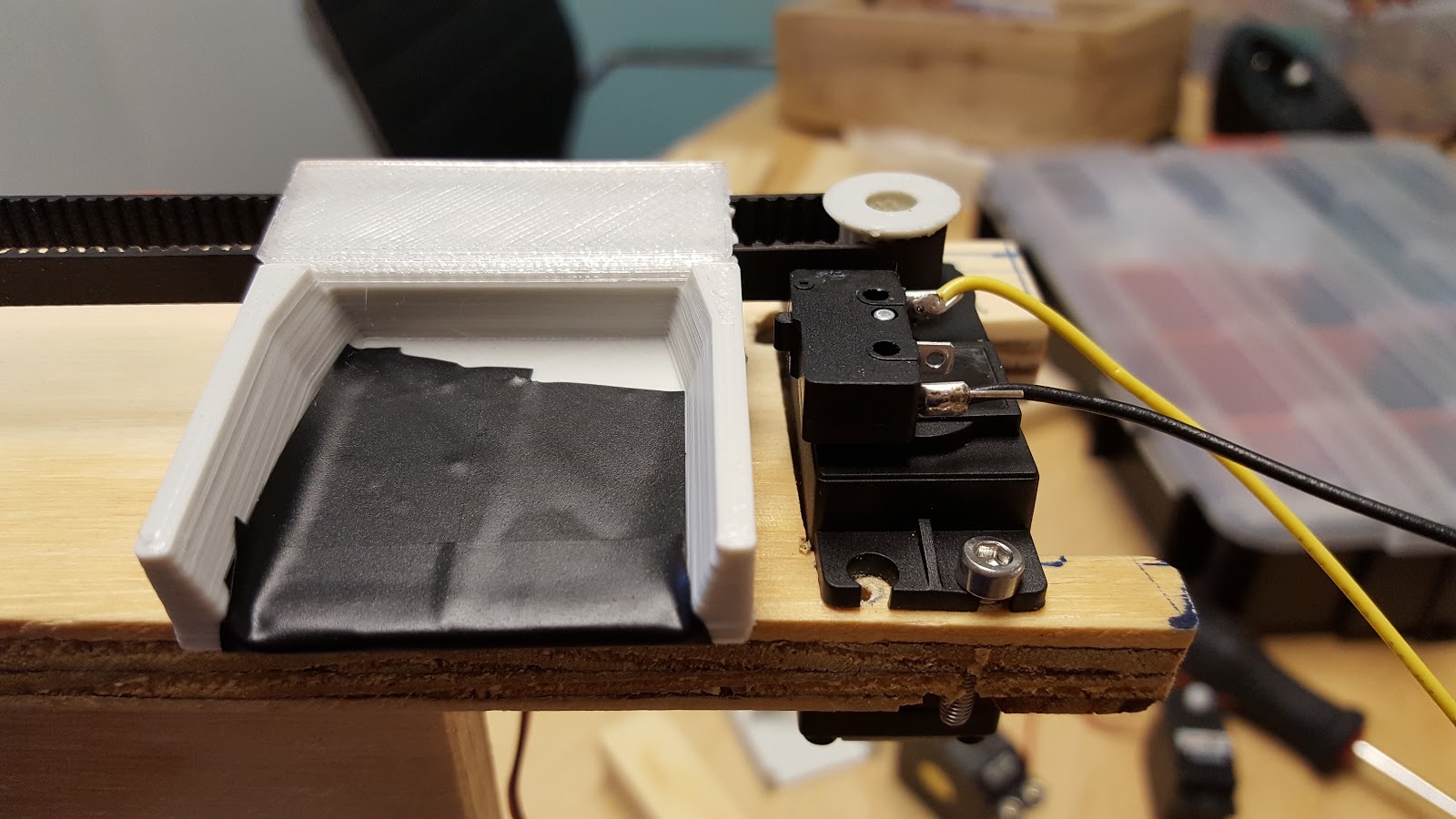
A line of photoresistors detects when a puck is dropped in (with some smart debouncing and thresholds set to avoid triggering it when someone’s hand hovers over the board).
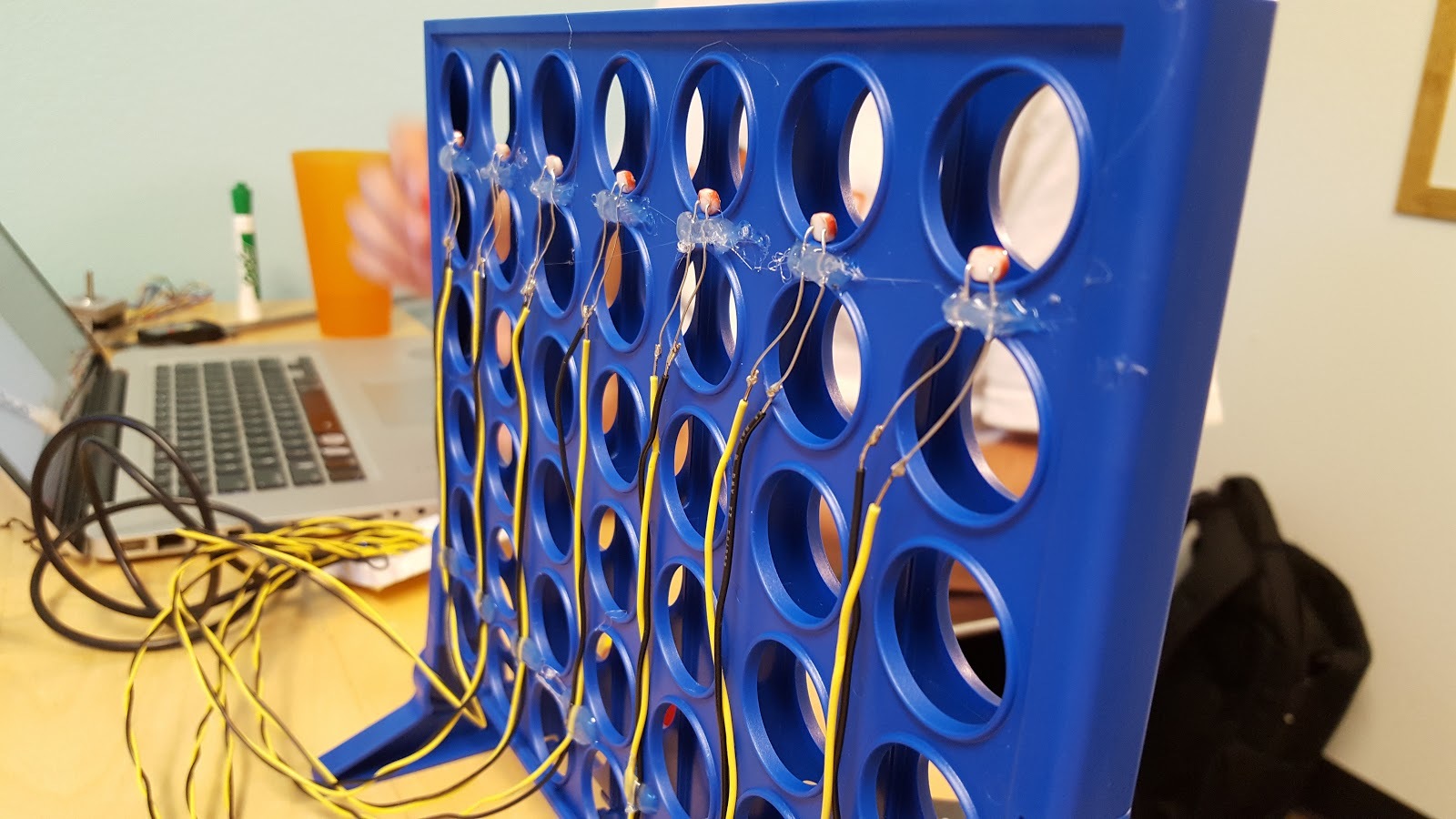
Unfortunately, we only had time to build one copy of our Connected Four machine; we hope to finish a complete set one day, but until then our demo version lives in our Boulder office:

You can find our code for controlling game state and servos from a Particle here.
